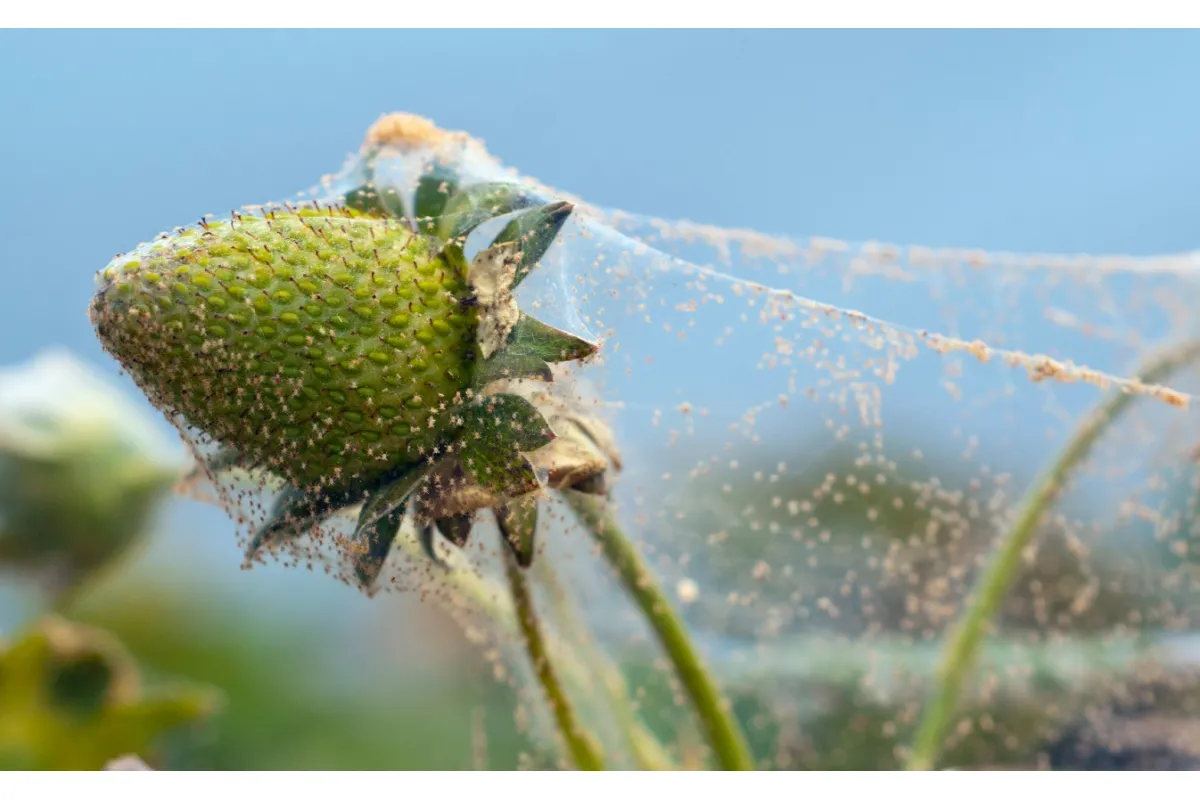They come uninvited and strike in silence — feeding on the very life of your plants.
Spider mites are among the most common plant pests in North America, and they can turn a lush rose bush or a thriving fiddle-leaf fig into a sad sight in just days.
But don’t panic. You can win this battle. With the right knowledge, a few reliable products, and consistent care, spider mites can be eliminated and prevented. Let’s explore how to identify them, what causes infestations, and — most importantly — how to get rid of spider mites on houseplants and garden plants effectively.
How to Tell If Spider Mites Have Attacked Your Plants
These tiny arachnids are masters of disguise — but the damage they leave behind is unmistakable.
What Do Spider Mites Look Like?
Spider mites (Tetranychus urticae and related species) are microscopic, usually less than 1 mm long, and may appear yellow, reddish, or brown.
You’ll rarely notice them individually — instead, you’ll see clusters of what look like tiny moving dust particles on the undersides of leaves.
They spin delicate webbing that protects their eggs and larvae. As the infestation grows, this webbing spreads across stems and petioles — a telltale sign that your plant has become a spider mite hotel.
Signs of Spider Mite Damage
At first, leaves develop tiny pale dots — feeding marks where mites have pierced the leaf surface to suck out cell sap. Over time, these dots merge into yellowish or bronze patches, and the leaf starts to lose color and strength.
-
Early stage: Faint stippling on the upper side of leaves.
-
Moderate stage: Leaves look dusty, dull, or faded; thin webbing may appear underneath.
-
Severe stage: Entire sections of the plant are wrapped in webs, leaves dry up, curl, and drop.
If you suspect mites, hold a sheet of white paper under a leaf and tap it gently. Tiny crawling specks confirm your suspicion — you’re dealing with spider mites.
How to Get Rid of Spider Mites
Beating spider mites takes persistence and a multi-step approach. A quick rinse helps, but true success comes from combining mechanical, organic, biological, and chemical methods.
1. Start with Simple, Gentle Methods
If your houseplants are only mildly infested, begin with a warm shower.
Rinse both sides of the leaves thoroughly to wash away mites and their eggs. For potted plants, cover the soil with plastic to keep it from getting waterlogged.
For large or thick leaves, use a mild soap solution (1 tsp of gentle dish soap per quart of water) and wipe each leaf with a soft cloth. This removes mites and their sticky webbing.
🌿 Note: For outdoor plants, this method alone rarely suffices — you’ll likely need targeted treatments.
2. Use Natural and Organic Treatments
Spider mites thrive in dry, warm environments, so increasing humidity helps slow them down.
Regular misting or using a humidifier can make your indoor space less inviting for mites.
Next, apply horticultural oils or insecticidal soaps — these coat the mites, suffocating them. Natural options like neem oil, canola oil, or pyrethrin-based sprays are highly effective if applied directly onto the mites.
Repeat treatments every 5–7 days for at least three cycles — this ensures you kill new mites hatching from eggs.
3. Introduce Biological Control (Nature’s Predators)
If you prefer eco-friendly pest management or have a greenhouse setup, use predatory mites — such as Phytoseiulus persimilis or Neoseiulus californicus.
These beneficial insects feed exclusively on spider mites and can wipe out infestations without chemicals.
They’re available from biological control suppliers in the U.S. and can be released directly onto infested plants.
4. When to Use Chemical Miticides
For heavy infestations, especially outdoors or in large collections, miticides (acaricides) may be necessary.
Remember — not every insecticide kills mites. Look for products labeled “for spider mites,” such as those containing:
-
Bifenthrin (contact action)
-
Abamectin (systemic + contact)
-
Spiromesifen or Etoxazole (effective on larvae and eggs)
Apply in the morning or evening, never in full sun, and always follow label directions. Rotate products between treatments to prevent resistance.
Prevention: Keep Spider Mites Away for Good
The best spider mite control is prevention — making your environment uncomfortable for them.
-
Inspect new plants before bringing them home. Quarantine for two weeks.
-
Maintain humidity around 50–60%. Spider mites despise moist air.
-
Clean and dust leaves regularly — mites thrive on dusty, dry foliage.
-
Ensure proper airflow around plants.
-
Remove infested leaves immediately and sanitize tools after use.
For gardens, remove fallen leaves and debris at the end of the season. Many mites overwinter in dry organic matter — so clean beds thoroughly in fall.
Can You Get Rid of Spider Mites Forever?
Honestly — no.
Spider mites are resilient travelers. Their eggs and adults can hitchhike on the wind, on clothing, or with fresh flowers.
The goal isn’t to create a “mite-free” world but to build an environment where mites can’t thrive.
By maintaining strong, well-hydrated plants and acting early at the first signs of damage, you can keep these pests under control year-round.
Let your connection with plants bring joy, not frustration. Stay observant, stay proactive — and your green corner will remain a thriving, pest-free oasis.



